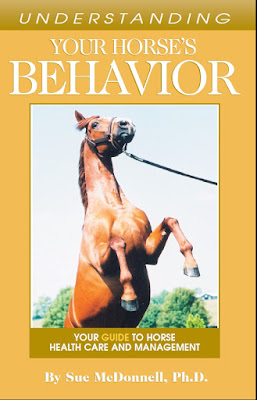
About Book
A horse’s vision is its primary detector of danger. Even though they have poor color vision, they can differentiate blue and red from gray hues. However, they have more trouble differentiating yellow and green from gray. Horses also have poor depth perception when only using one eye. They can’t tell a trailer from an endless tunnel, or a mud puddle from a bottomless lagoon. Their perception is improved by about 5 times when using both eyes (binocular vision). They can instantly change their focus from near to far objects. This is why horses cock their head in different ways to see close vs. distant objects. Horses have an acute ability to detect movement. This is why a horse is much flightier on windy days; things that are normally stationary are now moving and perceived as a potential threat. Horses are able to see fairly well at night; however, the contrast sensitivity is less than that of a cat.




Add Comment